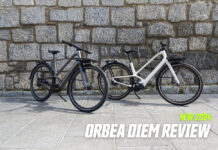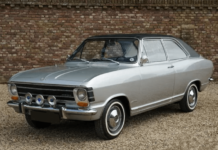[ad_1]
This is a 6-seat electric aircraft that uses four “stowaway” rotors for initial lift, and one rear-facing propeller for sustained flight. Several years ago they started with a prototype that did not have any of the vertical-lift features, called the CX300. It also used a single rear-facing propeller, which would take off and land on conventional runways.
Over two years, the CX300 has flown 22,000 miles, and has been evaluated by FAA and military test pilots. It has flown 386 miles on a single battery charge. The CX300 is designed for short-haul medical, cargo, and passenger operations at a lower operational cost. Its design is based on an operational niche where the FAA stated that “More than a third of all global flights today are actually less than 500 miles”
Several companies have demonstrated a working “solid state battery” prototype, and not only are SSB’s fire-safe, They allow rapid charging and over a 50% increase in range per volume. Every EV industry will be affected by the improvements that SSB’s provide, but the Aircraft industry will be impacted the most by viable SSB’s.
BT said the cost to fly the CX300 about 150 miles was $17 in electricity, and the conventional turbine plane that flew next to it cost Beta $700 worth of Jet-A fuel.
___________________________________________________
The Lifting Rotors
To conserve range, owners of the Alia-250 will occasionally take off and land on a conventional runway, but should the need arise, it’s four rotors provide it with full “Vertical Takeoff and Landing ” / VTOL capability.
Because the motors are electric and do not ingest air, they can land and takeoff in dusty environments that have so much loose debris that it would choke a gasoline engine.

We are also watching developments with the Joby “Air Taxi”, and researching them revealed that there is a demand for a shuttle service that would take passengers from the roof of high-rise buildings in Manhattan to the Newark airport. These routes are currently serviced by helicopters which have proven to be expensive and noisy.
As those helicopters reach their “Time Before Overhaul” hours, they will slowly be replaced by electric-aircraft options, as electric craft like the Joby and the Alia-250 become available. Although there are electric helicopters in development, the fact that the Alia uses lift that is provided by its wings when in forward motion will give it greater range per battery volume.

This is the best picture I could find of the rotors being deployed. The initial prototype could have been scaled up or down, and this size was stated to be perfect for a paramedic transport, with room for one patient and two medical personnel.
___________________________________________________
The Propeller Drive
Having a rear-facing propeller is commonly referred to as a “pusher” drive.

This is the best picture I could find of the rear drive. The VTOL rotors are stowed to reduce drag, which helps extend the Alia’s range. The small black triangle above the “N” is a NACA duct for drawing-in air to cool the motor.
___________________________________________________
The Cockpit
By using a high-wing location, and having the propeller drive in the rear, the Alia’s cockpit has exceptional visibility.

In the spring of 2021, the Alia-250 was tested and approved for airworthiness by the U.S. Air Force as the first step in securing military contracts. The inherent low-heat signature and quiet operation of the Alia provides capabilities that are of a keen interest to military operators. Plus the design of the Alia also allows the addition of floats for water-borne operations.
Meanwhile, major companies have been placing bets on Beta Technologies’ continued success. In April, BT signed a contract to sell 10 Alia planes, at roughly $4 million each, to United Parcel Service by 2024. United Therapeutics had put up $1.5 million to help founder and CEO Kyle Clark launch BT in 2017, and they have requested 60 aircraft to be delivered by 2026 to transport the synthetic human organs that his biotech firm plans to produce.
Ireland-based aircraft leasing company LCI has placed a committed order for 50 of Beta’s Alia-250, with options for 75 more. BT has recently secured $375-million in its latest series B funding round, bringing its total amount raised to $800-million.
The first Alia aircraft model is targeting a range of a minimum 250 nautical miles (288 miles or 463 kilometers) when using current battery technology, while carrying five passengers and a pilot, or 1,400 pounds (635 kg) of payload.
For those who are tired of waiting for solid-state-batteries to reach mass-production, there is nothing about the Alia-250’s design that prevents the addition of a hybrid generator to extend range, and if you are curious about my attitude concerning hybrid drivetrains, this is my article on Edison hybrid electric trucks (click here)
___________________________________________________
More of our articles on electric aircraft
If you liked this article, you may also enjoy what we’ve written about these electric aircraft…
Nine different electric aircraft in 2020, click here
The 2021 10-passenger Eviation “Alice”
The Pyka drones and their P3 aircraft
China’s Autoflight Aviation electric and hybrid drones for smuggling cocaine
___________________________________________________
LINKS
The Home page for Beta Technologies can be found by clicking here
Their Facebook page can be found by clicking here
Beta Technologies Youtube channel can be found by clicking here
Podcast episode 547, an interview with BT about the Alia-250
___________________________________________________
Written by Ron/spinningmagnets, February 2024
[ad_2]
Source link











